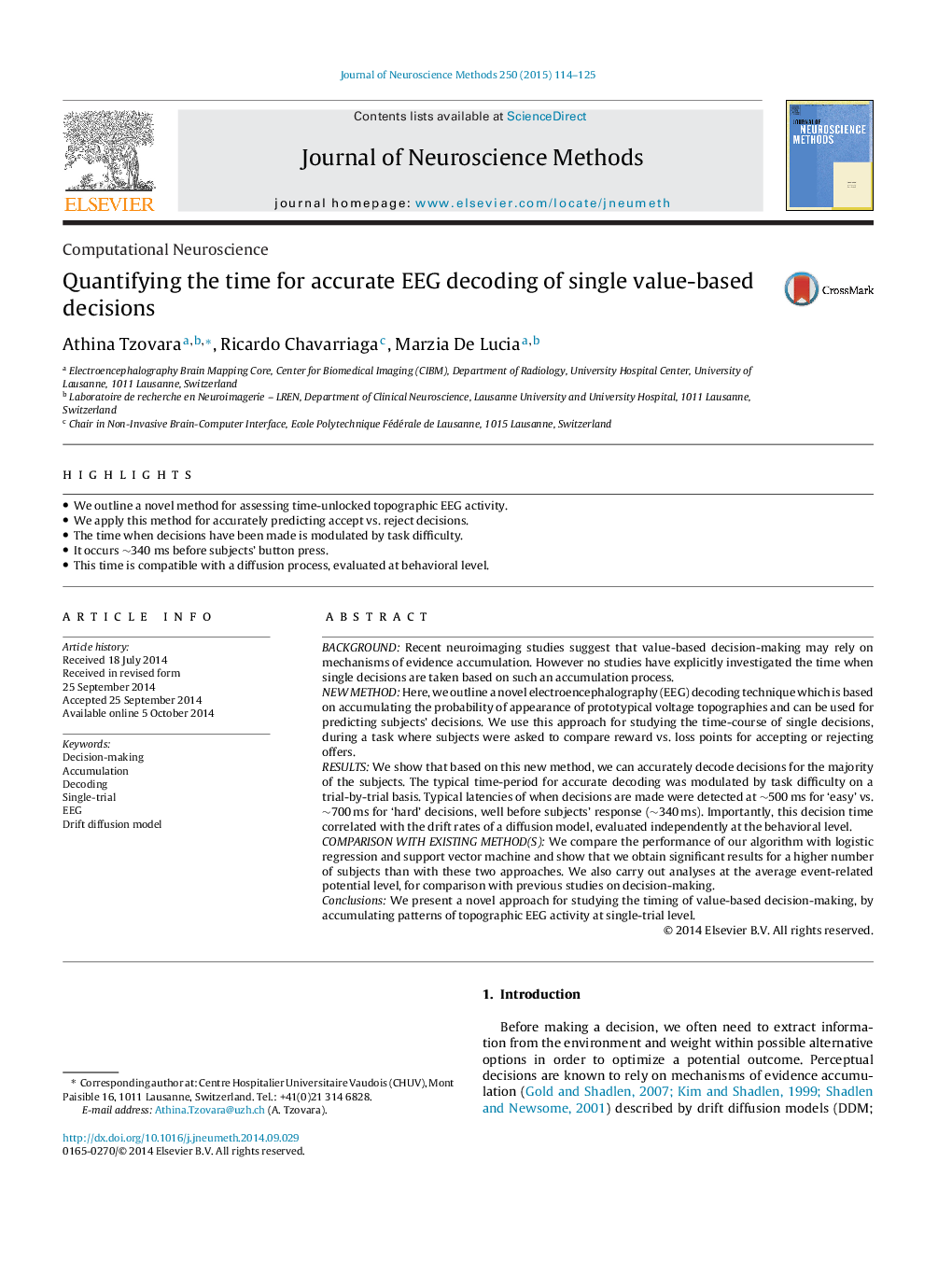| Article ID | Journal | Published Year | Pages | File Type |
|---|---|---|---|---|
| 6268214 | Journal of Neuroscience Methods | 2015 | 12 Pages |
â¢We outline a novel method for assessing time-unlocked topographic EEG activity.â¢We apply this method for accurately predicting accept vs. reject decisions.â¢The time when decisions have been made is modulated by task difficulty.â¢It occurs â¼340 ms before subjects' button press.â¢This time is compatible with a diffusion process, evaluated at behavioral level.
BACKGROUNDRecent neuroimaging studies suggest that value-based decision-making may rely on mechanisms of evidence accumulation. However no studies have explicitly investigated the time when single decisions are taken based on such an accumulation process.NEW METHODHere, we outline a novel electroencephalography (EEG) decoding technique which is based on accumulating the probability of appearance of prototypical voltage topographies and can be used for predicting subjects' decisions. We use this approach for studying the time-course of single decisions, during a task where subjects were asked to compare reward vs. loss points for accepting or rejecting offers.RESULTSWe show that based on this new method, we can accurately decode decisions for the majority of the subjects. The typical time-period for accurate decoding was modulated by task difficulty on a trial-by-trial basis. Typical latencies of when decisions are made were detected at â¼500Â ms for 'easy' vs. â¼700Â ms for 'hard' decisions, well before subjects' response (â¼340Â ms). Importantly, this decision time correlated with the drift rates of a diffusion model, evaluated independently at the behavioral level.COMPARISON WITH EXISTING METHOD(S)We compare the performance of our algorithm with logistic regression and support vector machine and show that we obtain significant results for a higher number of subjects than with these two approaches. We also carry out analyses at the average event-related potential level, for comparison with previous studies on decision-making.ConclusionsWe present a novel approach for studying the timing of value-based decision-making, by accumulating patterns of topographic EEG activity at single-trial level.
